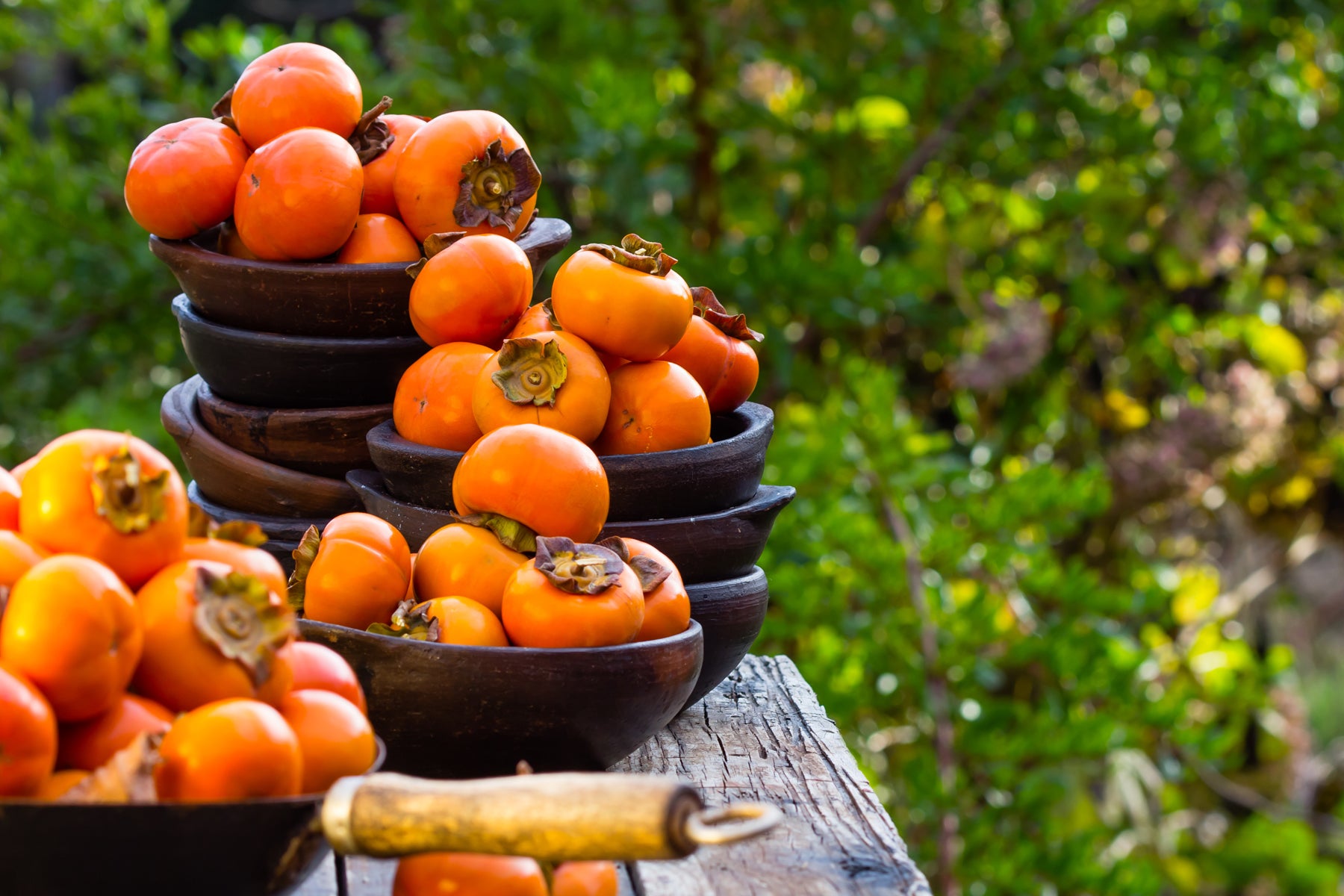Persimmon trees are a unique option for those interested in growing fruit trees on their property. These deciduous trees can produce a large amount of persimmons, a fruit that might not be well known to Americans, but is actually the national fruit of Japan. While they grow well in many places in Asia and Australia, they also grow very well in many areas of the United States.
When it comes to the fruit of persimmon trees, there are two main types. These are known as astringent or non-astringent persimmons. It is important to know which type of persimmon your tree produces because you pick the fruits at different times. An astringent persimmon tends to look ripe and ready to eat well before you should pick it. With the astringent-type of persimmon, you want to pick only when the fruit is quite soft and jelly-like to the touch, otherwise it can be bitter. At this point, they are quite juicy and sweet.
Non-astringent persimmons, on the other hand, should be picked while they are still firm. They aren’t super sweet, they are more sugar cane or cantaloupe-flavored with a crisp texture. While both varieties look similar to tomatoes, they have a very different texture and taste. Before you select persimmon trees, consider sampling the fruit from different types of trees to determine which one you enjoy the most.
Persimmons can be eaten by themselves, but there are many wonderful recipes that include this fruit. You can make jam, muffins, cookies, pies and smoothies with persimmons. Sliced persimmon can be an excellent addition to a salad or perhaps a gourmet grilled cheese sandwich. They also make wonderful sorbets and ice creams.
At Plant Me Green, we sell about 5 varieties of persimmon trees, most of which do best in USDA Zones 8 and 9, although several will thrive in Zone 7 and some even in Zone 6. If you are searching for non-astringent, we sell Ichi Ki Kei Jiro, Maekawa Jiro and Fuyugaki trees.
The Maekawa Jiro is quite hardy and can handle the temperatures of Zone 6 through 10. Ichi Ki Kei Jiro also can handle Zones 6 through 9, and is an excellent option if you want a small tree. This variety is considered a dwarf persimmon tree. The Fuyugaki or Fuyu bears fruit that stays edible for several weeks after picking and is also a very pest-resistant and disease resistant. Many types of persimmon trees also are quite resistant to disease and pests.
We also have several astringent varieties. The trick with the astringent varieties is to simply make sure the fruits are very ripe before picking. Our astringent varieties include Nikita’s Gift, Rosseyanka, Saijo, Weeping, and Giombo. With proper care, all of these persimmon trees can produce a bounty of delicious fruit. Under the descriptions for each kind of persimmon tree, we list some helpful planting and care tips.


Comments
Best Persimmon Tree Types for Zone 6 (Delta, CO)
1. American Persimmons (Diospyros virginiana)
Best for cold tolerance – hardy to Zone 4 or 5
Flavor improves after frost and ripening
Astringent until fully soft, but incredible flavor
Grows well in less humid conditions
Pollination note: Plant at least one male if growing from seedling stock (or choose a self-fruiting cultivar)
Recommended Varieties:
Yates (aka Juhl) – semi-self-fertile, very cold-hardy
Prok – large fruit, excellent cold hardiness
Meader – self-fertile, hardy to -25°F
2. Hybrid Persimmons (American x Asian Crosses)
Often more cold-tolerant than Asian types, with larger fruit and less astringency
Good flavor and adaptability
Recommended Varieties:
Nikita’s Gift – hybrid of American x Asian, self-fertile, hardy to -10°F
Rosseyanka – excellent hybrid flavor, cold hardy to Zone 5
⚠️ Caution with Asian Persimmons (Diospyros kaki)
Most are only reliably hardy to Zone 7
Even cold-hardy types like Ichi Ki Kei Jiro or Saijo may struggle in your area due to:
Late spring frosts killing early buds
Low humidity and dry winds causing stress
If you do want to try one, plant it in a protected microclimate (south-facing wall, wind shelter, mulch heavily) and expect to experiment.
I would like to have several persimmon trees in Delta Colorado. Zone 6. Any suggestions?
34465 zip code
Looking to grow a small orchard would love to add a persimmon tree(s)
I have a neighbor who has a persimmon tree about twenty feet tall with baseball sized persimmons on it. We are in zone 6, Franklin Co. Va. and I would like to grow this type of tree, possibly more than one large type. Any information would be appreciated
Hi, do you hace grafted Persimmon plant and can you ship it to Puerto Rico?